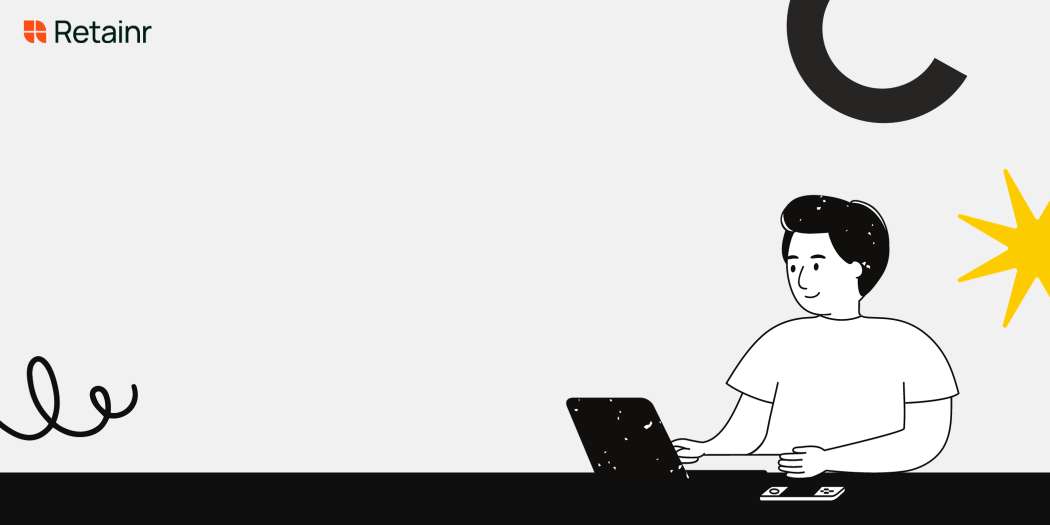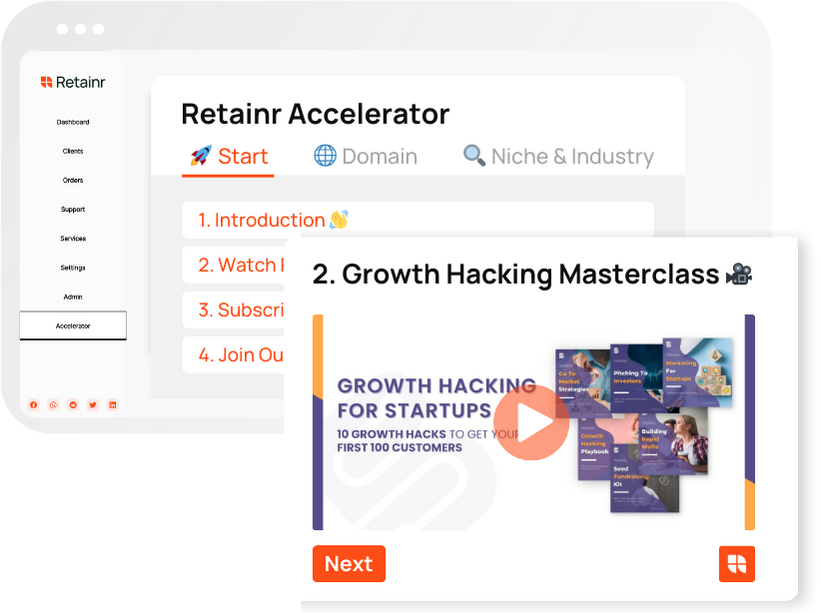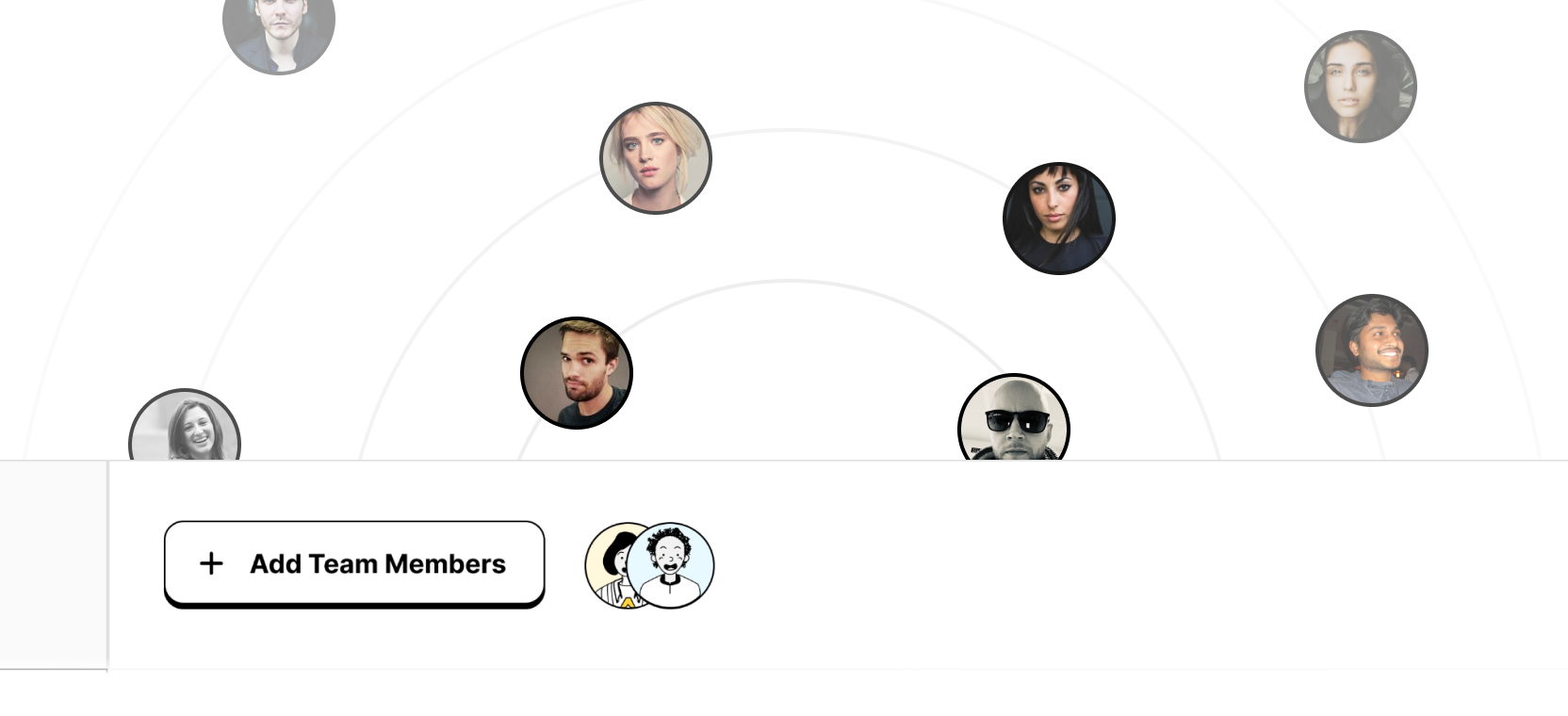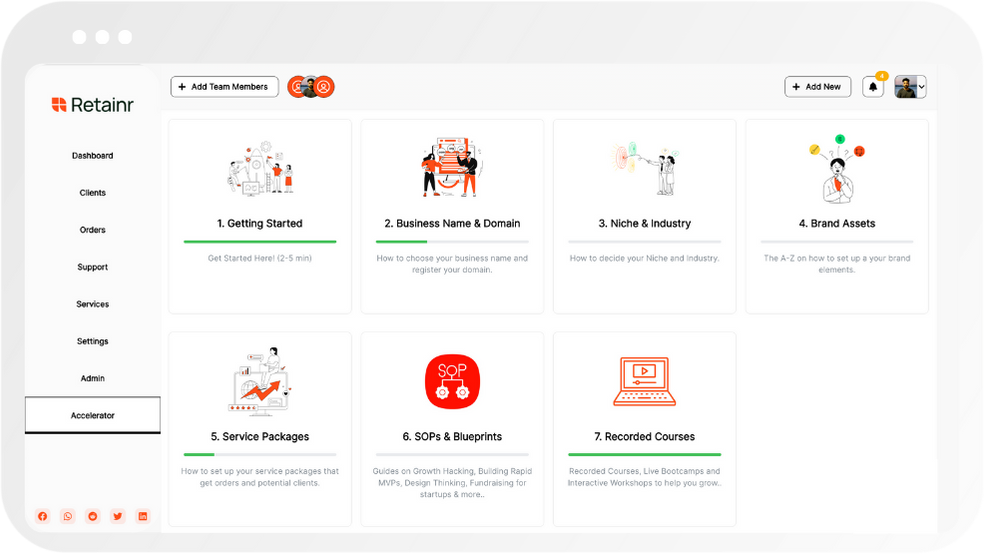
5 Strategies to Excel in Remote Work Environments
Build with Retainr
Sell your products and services, manage clients, orders, payments, automate your client onboarding and management with your own branded web application.
Get Started1. What are the top five strategies for excelling in remote work environments?
Top Five Strategies for Excelling in Remote Work Environments
Remote work has become significantly common with the rise of digital technologies empowering employees to accomplish their tasks from any location. There are five key strategies to excel in such settings, which includes: creating a designated workspace, setting a rigid schedule, taking breaks, using tools to stay organized and communicating effectively.
- Creating a Designated Workspace: Having a separate workspace not only helps concentration but also assists in maintaining a fair work-life balance.
- Setting a Rigid Schedule: Following a strict schedule ensures daily tasks' completion, preserves punctuality and enhances productivity.
- Taking Breaks: Regular short breaks can improve concentration and maintain a high level of work performance.
- Using Tools to Stay Organized: Digital tools like Asana and Trello can keep track of your tasks, deadlines and meetings.
- Communicating Effectively: Excellent communication is vital to stay informed, feel connected to your team and express ideas clearly.
Exploring Each Strategy in Detail
Each strategy is critical to succeeding in a remote work environment and offers distinct benefits which are mentioned below in a tabular format:
| Strategy | Benefits |
|---|---|
| Creating a Designated Workspace | Promotes focus, minimizes distractions, and facilitates work-life balance. |
| Setting a Rigid Schedule | Manages time effectively, establishes work boundaries, and enhances productivity. |
| Taking Breaks | Boosts mental well-being, prevents exhaustion, and refreshes the mind for new tasks. |
| Using Tools to Stay Organized | Prevents oversight of important tasks, aids in resource allocation, and streamlines workflow. |
| Communicating Effectively | Maintains team cohesion, enables easy conveyance of ideas, and sustains a sense of belongingness in team members. |
By applying these strategies, one can navigate the challenges of remote work and thrive in their professional career irrespective of their physical location.
2. How can I improve my productivity while working remotely?
Time Management Techniques
Improving productivity begins with effective time management. The first step should be creating a daily work plan. Use online tools or mobile apps to organize your tasks, deadlines, and important dates. Prioritize your tasks based on their urgency and importance.
- The Pomodoro Technique: This involves breaking down your work into 25-minute intervals, separated by short five-minute breaks. After every fourth work interval, take a longer break.
- Time blocking: This involves scheduling specific blocks of time for different tasks or activities during your day.
- The Eisenhower Matrix: This helps you decide on and prioritize tasks by urgency and importance, splitting your duties into ‘urgent and important’, ‘important but not urgent’, and ‘neither urgent nor important’.
The Right Tools and Software
Utilizing productivity tools can greatly enhance remote work efficiency. There are various tools and apps available to simplify communication, project management, and task tracking. Using the right tools streamlines processes and ensures that everyone on the team is in sync.
| Tool | Description |
|---|---|
| Slack | A platform for team communication and collaboration. It has features like instant messaging, file transfers and group discussions. |
| Asana | A project management tool that helps team members track their work, organize tasks, and manage deadlines. |
| Trello | A productivity platform that uses cards and boards to help organize and prioritize projects in a flexible and rewarding way. |
Creating a Conducive Work Environment
Your work environment plays a significant role in your productivity level. It is essential to create a workspace that promotes focus and minimizes distractions. This can be achieved in several ways:
- Having a specific workspace: This helps you mentally separate your work time from your personal time, and makes you more disciplined.
- Minimizing distractions: Turn off notifications for social media and other non-work related platforms during your working hours.
- Comfort: Invest in an ergonomic chair and desk. If you’re comfortable, you’re more likely to stay focused and be more productive.
3. What strategies can I use to better manage my time when working from home?
Strategy 1: Set a Routine and Stick to it
Having a well-defined routine can make a significant difference in productivity while working from home. This should not just include your actual workhours, but also meals, breaks and personal time. Try to keep this routine similar to the one you had at the office.
- Start your day at the same time as you would if you were going to the office.
- Set specific times for meals and quick breaks to refresh your mind.
- Keep your workspace clean and organized as it contributes to your productivity.
- End your day at a specific time. It's easy to lose track of time when you're working from home.
Strategy 2: Use Time Management Tools
There are several digital tools that can help manage your time effectively. These tools typically come with features that allow you to block out time for specific tasks, track how long different tasks take, and remind you to take breaks.
| Tool | Features |
|---|---|
| Asana | Task management, project tracking, collaboration |
| RescueTime | Time tracking, distraction blocking, productivity reporting |
| Google Calendar | Scheduling, reminders, goal setting |
Strategy 3: Employ the Pomodoro Technique
The Pomodoro Technique is a time management strategy that encourages people to work with full focus for 25 minutes followed by a 5-minute break. This technique can especially be helpful when you're finding it hard to keep your focus or are dealing with a particularly tough task.
- Choose a task to work on
- Set a timer for 25 minutes
- Work on the task until the timer rings
- Take a short 5-minute break
- Repeat the process. After 4 cycles take a longer break, about 20 minutes.
4. How can I avoid distractions and stay focused while working remotely?
Strategies to Avoid Distractions
With remote work, managing distractions could be a daunting task. Adhering to these strategies may improve your concentration levels:
- Designate Your Workspace: Creating a proper workspace, isolated from home distractions can go a long way in promoting a productive mindset.
- Set Strict Working Hours: Designate specific work hours and communicate them to your family or housemates to minimize interruptions during these periods.
- Limit Social Media: Use website blockers to restrict your online activity to work-related sites during your working hours.
- Manage Breaks: Take regular, scheduled breaks to re-energize and refresh your mind. Avoid passive distractions such as TV during these breaks.
- Plan Your Day: Having a roadmap for the day with a list of tasks to accomplish will keep you focused and productive.
Focus-Enhancing Tools for Remote Work
There are numerous productivity tools designed to enhance focus and coordination in remote work. Here are some of the most commonly used:
| Tool | Functionality |
|---|---|
| Slack | For prompt communication with teammates, managing tasks, and updating progress. |
| Zoom | For video conferences, meetings, presentations, which makes communication more effective and less susceptible to distractions. |
| Trello | To manage and organize tasks, establishing priorities, due dates, and progress tracking. |
Dealing with Remote Work Challenges
The efficiency of remote work substantially depends on how you manage your day and use productivity tools. But there's always room for improvement:
- Never Multitask: Though it may seem useful, multitasking often leads to errors, and tasks take longer. Stick to one task at a time for 100% focus.
- Stay Connected: Use collaboration tools to stay updated with your team. It reduces the feeling of isolation and keeps you engaged in your work.
- Mental Health: Do not ignore your mental health. Disruptions in work-life balance can lead to burnout. Prioritize self-care and activities like yoga or meditation to manage stress.
5. What techniques are effective for promoting teamwork in a remote work environment?
Effective Techniques to Promote Teamwork
Remote work demands active strategies to keep the team connected and subsequently boost productivity. They encompass various strategies from creating effective communication channels, appreciating team members, to fostering an inclusive culture. Let's break these down further:
- Effective Communication Channels: Keep your team connected by using efficient communication tools. This could range from emails, video conferencing, instant messaging, to collaborative project management tools.
- Recognition and Appreciation: Motivate your team by acknowledging their hard work and achievements. Regularly appreciating your team adds to the feeling of being valued and part of the team.
- Fostering Inclusive Culture: In an inclusive work environment, every team member feels valued, heard, and their input appreciated. Encourage team members to share their ideas and opinions.
Techniques Spearheaded by Team Leaders
Team leaders play an essential role in shaping a remote work environment. The following are the strategies they should prioritize:
| Technique | Description |
|---|---|
| Regular Check-ins | Consistent group or individual check-ins help leaders gauge team morale and address any issues promptly. |
| Collaborative Decision Making | Valuing everyone's input in decision-making makes team members feel important and increases their motivation and commitment. |
| Employee Empowerment | Empower employees by entrusting them with responsibilities. It not only displays your trust in their abilities but also instigates a sense of ownership towards their work, leading to better outcomes. |
Maximizing Tools and Technology
Effective use of tools and technology can transform a remote work environment positively. Some of these include:
- Project Management Tools: Platforms like Asana, Trello, or Atlassian's JIRA allow teams to track progress and assign tasks efficiently across the team.
- Communication Tools: Applications like Microsoft Teams, Slack, or Zoom provide a platform for quick discussions, team meetings, and maintaining a persistent team dialogue.
- Cloud-Based Collaboration: Google Workspace or Office 365 allow teams to work and collaborate on documents, presentations, and spreadsheets in real-time.
6. How can I establish boundaries between my work and personal life while working from home?
Set Daily Work Schedules
Adopting a consistent work schedule can help distinguish between professional and personal time. This not only gives you structure during the day but also sends a clear signal when your workday starts and ends. Below is a sample timetable:
| Time | Task |
|---|---|
| 9:00 AM | Start of Work |
| 1:00 PM | Lunch Break |
| 2:00 PM | Resume Work |
| 6:00 PM | End of Work |
Create a Dedicated Workspace
Having a designated workspace can provide both a physical and mental boundary, separating work from personal life. The following are some work-at-home tips:
- Choose a quiet space dedicated solely to your work to avoid distractions
- Keep your workspace clean and organized to maintain a professional setting
- Equip your workspace with necessary work tools and maintain ergonomic standards to ensure comfort and productive work sessions
Establish Clear Communication Guidelines
Communicating your boundaries to colleagues is a critical part of working from home. Start by setting specific hours for work-related conversations and emails. You can then use tools to mute notifications during personal time. Here are some guidelines you might take into consideration:
- Implement 'Do Not Disturb' modes on communication platforms after your declared work hours
- Make use of status updates to let colleagues know when you are available or busy
- Please respect your colleagues' boundaries as well, remembering not to contact them outside of their declared work hours
7. What are the best strategies for maintaining motivation and engagement in a remote work setting?
Establish Clear Goals and Milestones
Remote work often involves less supervision, which can lead to decreased motivation if not managed well. One of the best strategies to combat this is by setting clear goals and milestones. With tangible targets to work towards, team members are more likely to stay motivated and engaged in their work. Goals should be Specific, Measurable, Actionable, Relevant, and Time-bound (SMART). This gives a clear understanding of what is expected and the milestones to achieve.
- Specific: Goals should be well defined and clear to understand.
- Measurable: Each goal should have criteria for measuring progress and completion.
- Actionable: Each goal should be achievable within available resources.
- Relevant: Goals should be aligned with broader team and organizational objectives.
- Time-bound: Every goal should have a time frame within which it is expected to be achieved.
Provide Regular Feedback
Regular feedback goes a long way in keeping team members motivated and engaged. This can be effectively done in two ways: positive affirmation and constructive critique. The below table highlights how these two modes of feedback can be used in a remote work environment.
| Mode of Feedback | Description |
|---|---|
| Positive Affirmation | This involves acknowledging and praising good work. It serves as a great motivator as it makes team members feel valued and recognized for their efforts. |
| Constructive Critique | This involves providing constructive criticism on aspects of work that need improvement. Constructive critique should be done in a way that it encourages improvement rather than causing discouragement. |
Promote Employee Well-being
In a remote work setting, maintaining psychological wellbeing is crucial for maintaining motivation and engagement. Employers can promote employee well-being in several ways:
- Encourage regular breaks.
- Advocate for work-life balance.
- Offer virtual wellness programs.
- Suggest self-care strategies.
- Provide platforms for social interaction with team members. Virtual team building activities or social hours can help in reducing loneliness and fostering a sense of community.
8. What tools are recommended for enhancing communication and collaboration in remote work environments?
Effective Communication Tools for Remote Work
To thrive in a remote environment, strong communication needs to be facilitated through the use of high-quality tools. Some top tools for communication include Slack for instant messaging, Zoom for video-conferencing, Microsoft Teams for workspace chat and video meetings, Google Hangouts for interactive communications, and Email for formal correspondence.
- Slack: Slack is an excellent platform for quick interactions, discussions, and updates that might not warrant a full email.
- Zoom: This is an ideal tool for setting up face-to-face meetings, conducting webinars and workshops.
- Microsoft Teams: This integrates well with other Microsoft 365 products and acts as an all-in-one workspace solution.
- Google Hangouts: While the tool may not focus too much on professional use, it still offers quality video calling, especially for Google-dependent teams.
- Email: Emails remain important for remote work as they provide an official record of correspondence and are useful for more formal, less urgent communication.
Efficient Collaboration Tools for Remote Work
Collaboration is also crucial to successful remote work, and there are plenty of tools designed to facilitate it. Popular options for collaboration tools include Google Workspace for document collaboration, Asana for task and project management, Trello for organizing work, and GitHub for code sharing and development.
| Tool | Purpose |
|---|---|
| Google Workspace | Helps you create, share, and collaborate on documents in real time. |
| Asana | Enables easy tracking and management of team projects and tasks. |
| Trello | Excellent for creating work boards and organizing tasks. |
| GitHub | Designed for developers to share and build better software. |
9. How can I improve my work-life balance while working remotely?
Maintaining a Healthy Work-Life Balance
Working remotely allows flexibility but may blur the boundary between work and life. However, there are several strategies you can deploy to manage your work-life balance effectively. Here are five crucial ones.
- Establish a routine: Consistency is key. Start and end your work at the same time as you would in an office.
- Designate a workspace: This will mentally set a boundary and remind you when it's time to work and when it's not.
- Take regular breaks: Short frequent breaks can actually boost productivity, just remember to step away from your workspace.
- Manage your workload: Prioritise tasks effectively. This can be done by establishing what needs to be done now, what can be done a bit later and what can be done whenever there's time.
- Unplug: Avoid burnout by spending time away from screens for some part of the day.
Work-Life Balance in Remote Working
Application of these strategies can vary based on the nature of your work and personal circumstances. Let's look at how these strategies could be implemented in a hypothetical day of a remote worker.
| Time | Activity | Strategy |
|---|---|---|
| 8 am - 9 am | Exercise and breakfast | Establish a routine |
| 9 am - 1 pm | Work | Designate a workspace |
| 1 pm - 2 pm | Lunch break | Take regular breaks |
| 2 pm - 6 pm | Work on Remaining Tasks | Manage your workload |
| 6 pm onwards | Family Time and Unplug | Unplug |
10. How can these five strategies improve my overall performance in a remote work environment?
Improvement in Performance
These five strategies hold immense potential to significantly enhance your overall performance in a remote work environment. The first strategy focuses on efficient communication. With the use of various digital tools, you ensure that you are constantly communicating with your team, which not only reduces the chances of miscommunication but also allows you to understand and contribute more effectively to team goals. Encouraging openness in communication also creates a positive work environment that motivates individuals to perform better.
The second strategy includes setting clear boundaries between work hours and personal time. By structuring your days, ensuring breaks, and avoiding overworking, you ensure a better work-life balance that ultimately leads to an improved performance. Another crucial strategy is to maintain a comfortable work environment. An uncluttered and quiet workspace minimizes distractions, enabling you to focus better on your tasks.
| Strategy | Benefits |
|---|---|
| 1. Efficient Communication | Facilitates better understanding and engagement. |
| 2. Setting clear boundaries | Maintains work-life balance and reduces burnout. |
| 3. Comfortable work environment | Enhances focus and productivity. |
The last two strategies involve staying proactive and continuously upgrading your skills. When working remotely, taking the initiative rather than waiting for others to take the lead can truly set you apart. It not only displays your dedication towards your work but also helps in completing tasks on time. Similarly, constantly upgrading your skills, on both professional and personal fronts, can help in handling the challenges of remote work more effectively. Understanding the latest tools and technologies, for example, can drastically improve your productivity and performance.
Conclusion
Excel in Remote Work Environments
Remote work environments have become the new norm and adapting to them can be challenging. Here are five strategies that can help you excel in remote work environments:
Excellent Communication
Clear communication is key in a remote setup, making use of tools that facilitate efficient and continuous communication is vital.
Resource Allocation
No matter where you work, proper resource allocation and management are essential.
Time Management
Working from home requires a high level of time management and discipline to maintain productivity.
Regular Breaks
Taking regular short breaks can help maintain your productivity levels and prevent burnout in the long run.
Usage of Appropriate Tools
Utilizing the right tools can make a significant impact in your work-from-home experience.
One software tool worth investing in is Retainr.io. This whitelabel software is perfect for managing Clients, Orders & Payments with Your Own Branded App. It provides end-to-end solution for running your business remotely, ensuring efficient communication, resource allocation, and time management.
To maximize your remote work productivity and manage your business effectively, get in touch with Retainr.io and explore their powerful features.
Boost Your Agency Growth
with Retainr Accelerator
Uncover secrets, strategies, and exclusive blueprints to take your agency's growth to the next level — from marketing insights to effective presentations and leveraging technology.

SOPs, Cheatsheets & Blueprints
Leverage 50+ SOPs (valued over $10K) offering practical guides, scripts, tools, hacks, templates, and cheat sheets to fast-track your startup's growth.
Connect with fellow entrepreneurs, share experiences, and get expert insights within our exclusive Facebook community.
.jpg)

Join a thriving community of growth hackers. Network, collaborate, and learn from like-minded entrepreneurs on a lifelong journey to success.

Gain expertise with recorded Courses, Live Bootcamps and interactive Workshops on topics like growth hacking, copywriting, no-code funnel building, performance marketing and more, taught by seasoned coaches & industry experts.

.jpg)

.jpeg)


